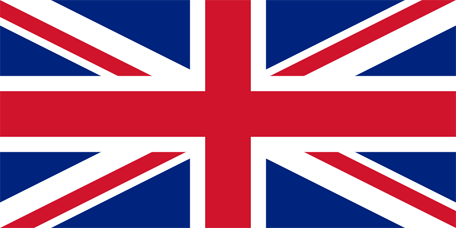Geography of Honolulu County, Hawaii
Geography of Honolulu County, Hawaii
Honolulu County, located on the island of Oahu in the state of Hawaii, is a region of breathtaking natural beauty, diverse landscapes, and vibrant culture. From its stunning beaches and lush rainforests to its majestic mountains and bustling urban areas, the geography of Honolulu County reflects the unique blend of tropical paradise and cosmopolitan city life.
Climate:
According to Travelationary, Honolulu County enjoys a tropical climate, characterized by warm temperatures, abundant sunshine, and consistent trade winds. The county experiences two main seasons: a dry season (kau) from May to October and a wet season (hooilo) from November to April.
Summer temperatures in Honolulu County typically range from 80°F to 90°F (27°C to 32°C), with warm, sunny days and cooler evenings. Trade winds from the northeast provide natural air conditioning and help to keep temperatures comfortable, even during the hottest months.
Winter temperatures are slightly cooler, with average highs ranging from 75°F to 85°F (24°C to 29°C), and lows dropping into the 60s°F (15°C to 20°C). The wet season brings occasional rain showers and higher humidity levels, particularly in windward areas and higher elevations.
Overall, Honolulu County’s climate is ideal for outdoor activities year-round, making it a popular destination for tourists and residents alike seeking sun, surf, and relaxation.
Beaches and Coastline:
Honolulu County is renowned for its world-class beaches and pristine coastline, which offer a wide range of recreational activities, from swimming and surfing to snorkeling and sunbathing. Some of the most famous beaches in the county include Waikiki Beach, Lanikai Beach, and Sunset Beach, each known for its soft white sands, turquoise waters, and breathtaking sunsets.
The coastline of Honolulu County is also home to several natural landmarks and geological formations, including volcanic craters, sea cliffs, and offshore islands. Diamond Head, a dormant volcanic crater located on the southeastern coast of Oahu, offers panoramic views of the surrounding coastline and Honolulu skyline.
Mountains and Volcanoes:
Inland from the coastline, Honolulu County is dominated by a dramatic landscape of mountains and volcanoes that rise steeply from the sea. The Koʻolau and Waiʻanae mountain ranges run parallel to each other, dividing the island of Oahu into windward (east) and leeward (west) sides.
The Koʻolau Range, located on the eastern side of Oahu, is characterized by lush rainforests, cascading waterfalls, and jagged peaks. The highest point in the range is Mount Kaʻala, which reaches an elevation of 4,025 feet (1,227 meters) and offers sweeping views of the island below.
The Waiʻanae Range, located on the western side of Oahu, features rugged cliffs, deep valleys, and dry forests. The range is home to Mount Kaʻala, the highest peak on Oahu, as well as several other prominent peaks such as Mount Kaʻala and Mount Olomana.
Valleys and Waterfalls:
Nestled between the mountain ranges of Honolulu County are several lush valleys and verdant rainforests that provide habitat for a variety of plant and animal species. Manoa Valley, located on the eastern side of Oahu, is known for its dense vegetation, scenic hiking trails, and majestic waterfalls, including Manoa Falls and Lyon Arboretum.
On the western side of Oahu, Waimea Valley is a lush oasis of tropical foliage, ancient Hawaiian cultural sites, and a picturesque waterfall that cascades into a natural swimming pool. Visitors can explore the valley’s botanical gardens, cultural exhibits, and scenic trails while learning about the rich history and ecology of the region.
Urban Areas and Cultural Sites:
Honolulu County is home to the vibrant capital city of Honolulu, which serves as the economic, cultural, and political center of Hawaii. The city is known for its bustling downtown area, historic landmarks, and world-class shopping, dining, and entertainment options.
Some of the most popular attractions in Honolulu County include Pearl Harbor and the USS Arizona Memorial, the Polynesian Cultural Center, and the Bishop Museum, each offering insight into the history, culture, and heritage of Hawaii and its people.
Beyond Honolulu, the county is dotted with charming towns and communities, each with its own unique character and attractions. From the laid-back surf town of Haleiwa on the North Shore to the bustling resort area of Waikiki on the south shore, Honolulu County offers something for everyone to enjoy.
Conclusion:
Honolulu County, Hawaii, offers a diverse and captivating landscape that reflects the natural beauty and cultural richness of the Hawaiian Islands. From its stunning beaches and majestic mountains to its vibrant urban areas and lush valleys, the geography of Honolulu County invites exploration, relaxation, and appreciation for the wonders of the Aloha State.
As stewards of this remarkable region, residents and visitors alike cherish and protect Honolulu County’s natural resources for future generations to enjoy. Whether surfing at Waikiki Beach, hiking in the rainforest, or exploring historic sites in downtown Honolulu, Honolulu County invites all who visit to experience the magic and beauty of Hawaii.

